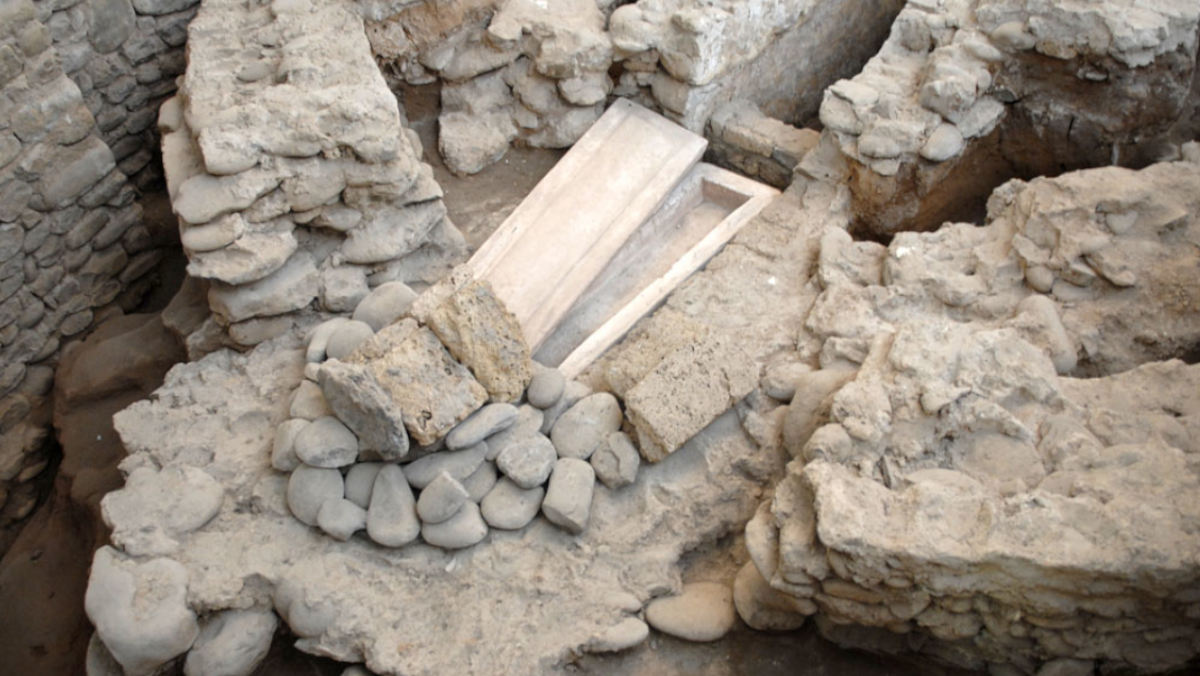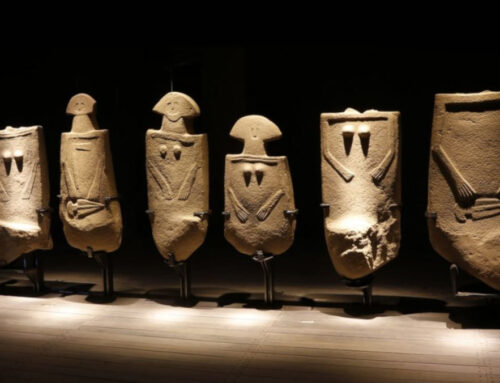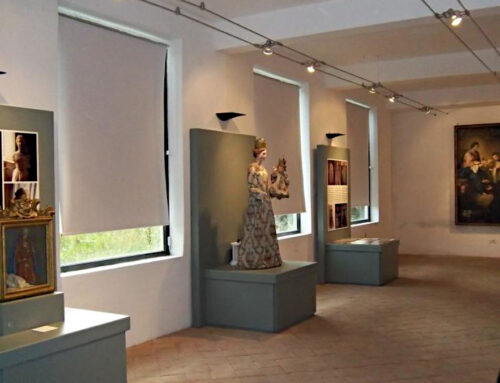
Museo di San Caprasio
Archaeological itinerary within the church. Since 2001, Aulla’s abbey-church and what remains of the abbey have been subject to a campaign for their renovation and archaeological excavation, whose most important achievement has been the 2003 recovery of the monumental tomb containing the plaster shrine that holds the relics of Saint Caprasio, a hermit monk from the 5th century who expired on the island of Lérins (known today as S. Honoreé), off the coast of Cannes.
The tomb can be seen inside the church, within the presbytery: constructed between the year 1000 and 1050, following the church’s 11th century expansion, it replaced a previously existing grave located inside the demolished apse of the church founded in 884 by Adalberto di Toscana. Traces of the 9th century church are still visible, such as the apse’s foundation, remnants of the altar, the Saint’s first tomb and a portion of the pavement made with repurposed marble originally in use during Roman times, including a bilingual epigraph dating back to the 1st century BC. Remnants of an even previous religious structure, constructed in the 8th century, can also be seen.
Towards the entrance, the right-side nave houses a baptismal font composed of a mortar and potsherd basin, dating back to the 12th century, when the monks’ church began performing baptisms. Traces of the church’s great entry door can be seen on the left side wall. This was the main entrance before the mid-19th century, when the current doors did not exist yet and the church’s blind façade was part of the city’s defensive perimeter. The two carved stones that have been reintegrated into the structure may have been a part of the doorway: the capital’s imagery – a face with demonic features, a beast and greenery – had the function of admonishing viewers against the dangers of the world, but also symbolised hope in the rebirth from sin, reinforced by the regal image of the eagle, an icon for Christ.
Rare geometric decorations can still be seen at the base of the pillars that were destroyed in 1945-46, on level with the pavement of the early 11th-century church. The church pavement dates back to the renovations completed in 1664, when 17 large tombs and the rich stucco decorations – an elegant segment of which still exists in the apse’s frame – were restored. The right-side nave displays the image of the “Addolorata” for worship: a beautiful “dressed” wood statue which previously depicted the Virgin Mary with the Child Jesus, prior to its mid-19th-century transformation into the sorrowful “Addolorata” figure, embracing the dead body of Christ in her arms.
The Cloister and Museum Collection
The cloister – recovered beneath a cement pavement and repurposed as a garden – houses the marble testament of a vow made to the Patron of the Community of Aulla in 1422, and a token remembering the peace treaty agreed upon herein in 1202 by the Bishop of Luni and the Malaspina family: Bible plants, aromatic herbs and the impluvium that once collected rainwater channelling it towards the nearby Magra river. The restored Capitular room collects all the artefacts that have been recovered during excavations, attesting to the various construction phases and liturgical ornaments pertaining to the three identified churches, as well as to the presence of pilgrims travelling the Via Francigena. A scallop shell, a papal medal and a significant sum of medieval coins – including French and German examples – document the presence of pilgrims since the very first transit made by Sigeric, who appointed Aulla as his 30th stop-over. The most important artefacts include a fibula fragment from the 8th century BC, a Longobard-era pin, an Arab-made cup from the 10th century as well as religious medals recovered from the church’s burial grounds. The cloister’s surviving chamber houses important stones attributed to the Padoan sculptor Oberto Ferlendi, such as the elegant, dragon-etched capital identified by Mariapia Branchi and other capitals decorated with grapevines, a symbolic fish, the lily that represents the Virgin, and a series of crux and palm-tree motifs. A final room hosts a replica of the inert bomb recovered near the Saint’s tomb, fragments of Baroque-era furnishings destroyed during the Aulla air raids, as well as a tribute remembering the flood that took place in October 2011. Beside it, the educational room offers screenings of a video recounting the abbey’s history and the life of Saint Caprasio.
The Lunigiana Stele Statue Museum “Augusto Cesare Ambrosi”
Castello del Piagnaro - Pontremoli. Lift (Porta Parma) phone. 0187831439 Email: info@statuestele.org Web: www.statuestele.org Please see www.statuestele.org The Museum of>>
The Pontremoli Diocesan Museum
Piazza del Duomo - Pontremoli. phone. +39 0187831439 / +39 3488097918 closed The Diocesan Museum is located in Piazza Duomo,>>
The Memory Archive Museum
Piazza Marconi, 7 Bagnone phone 0187427828, 0187427833 email: biblioteca@comune.bagnone.ms.it ; affarigenerali@comune.bagnone.ms.it Web www.museoarchiviodellamemoria.it please see www.museoarchiviodellamemoria.it The Museo Archivio della>>
The Malaspina Museum Archive
Mulazzo Town phone: 0187439807 - 3203150886 - www.archiviomuseodeimalaspina.com please see archiviomuseodeimalaspina.com Located in the palace of the Malaspina Marquises of Mulazzo,>>
People of Tuscany Emigration Museum
Lusuolo Castle - Lusuolo, Mulazzo phone: 0585 816524 Email: info@istitutovalorizzazionecastelli.it sito web: www.museogenteditoscana.it please see here The castle of Lusuolo –>>
The Ethnographic Museum of Lunigiana
tel. +39 0187 493417 / +39 0187 494400 / +39 0187 4988210 Email: biblioteca@comune.villafranca.ms.it web: www.museoetnograficodellalunigiana.it phone. +39 0187 493417 / +39 0187 494400 / +39 0187 4988210 Email:>>















